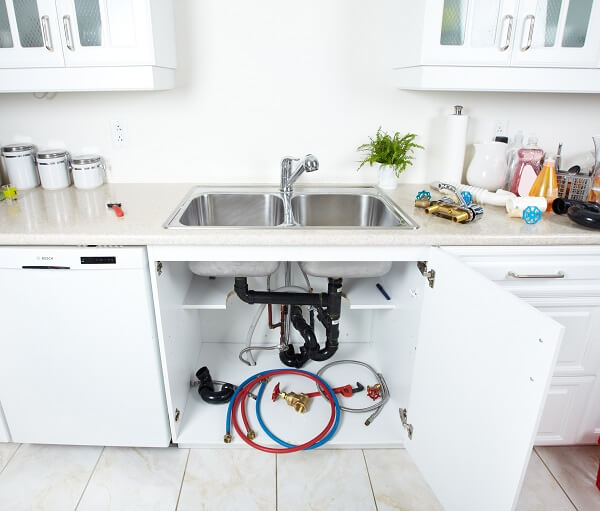Plumbing systems in a home are a lot simpler than most people realize. These systems operate using basic rules of physics like water running down due to gravity and pressure being able to move water upward through pipes. Once you understand how these concepts work, making repairs on your home plumbing system will be a lot easier.
A home’s plumbing system
The plumbing system in any home consists of two main subsystems. The first is the freshwater system which brings clean water to the fixtures in the home. The second is the wastewater system which removes wastewater from the home and toilets
Freshwater system
Water is usually fed into the home via the water supply from the local municipality. This water is pressurized as it enters the home, which allows it to travel around corners and to higher floors. The main water line is usually connected to a meter that records the amount of water used by the home.
Next to the meter, is usually an emergency shut-off valve. This can be used to stop the supply of water into the home. Knowing the location is extremely important since using it can prevent flooding when a plumbing issue develops. For example, a burst pipe can quickly flood an entire home if the emergency shut-off valve is not quickly used. Most fixtures in the house also have their own shut-off valves for this very purpose.
The water that comes in from the local municipality is ready for all of the home’s freshwater needs. Water needs to be fed into a water heater for the home’s hot water needs. One pipe supplies the heater with cold water, and hot water is distributed to all the fixtures in the home via a hot water pipe once it has been heated to around 140 to 160 degrees F.
Drainage system
Every home also needs a way to get rid of all the wastewater created from water used to clean dishes to waste from toilets. This is done by installing a drain system. These systems are powered by nothing else besides gravity. Due to this, all drainage pipes in a home have to be sloped to ensure wastewater flows properly. The drain lines in a home are connected to the local sewer system or a septic tank.
Drain systems use a combination of vents, cleanouts, and traps to ensure the proper flow of waste products and to prevent sewage gases from making their way into the home.
The vents allow air into the drainpipes which promotes a good flow of waste. Not properly venting drain lines is going to lead to many problems. Traps are another important part of a drainage system. These are the s-shaped pipe section that can be found under every sink. When water flows into the sink, it pushes its way past the trap and into the drainpipes. However, some water remains trapped in the S-section. This water serves as an airtight seal that prevents sewage gases from making it into the home.
Need help with your plumbing?
If you are a homeowner, you will surely have to deal with a plumbing issue at some point. A professional plumber can help you fix those issues efficiently. Call or visit your local plumber’s office to set up an appointment with a licensed plumber.
Request an appointment here: https://www.bevillstexas.com or call Bevills Plumbing, Heating & Air Conditioning at (325) 225-4115 for an appointment in our Abilene office.


